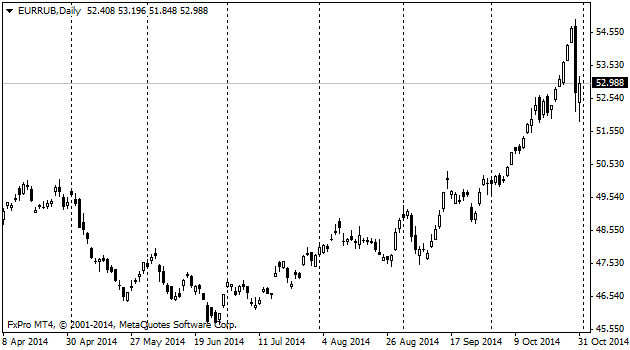EUR/usd
Yesterday the single currency managed to rally its strength, relying on the support at 1.2550. Today the pair remains under pressure so this level can fail to withstand the attack. USD's appreciation is explained by its strength against the yen during the Asian session and also by the reduction of commodity prices, which cools down interest in the commodity currencies. Yesterday's statistics were a bit more positive than expected, both for the euro and the dollar. Industrial and Services Confidence and their general index surpassed expectations, while Consumer Confidence remained the same. It is lightly positive news for the EU currency. Equally, Germany's employment statistics showed that the number of the unemployed shrank by 22k against the forecasted growth by 4k. The unemployment rate remained unchanged at 6.7%. However, we get that this improvement in the statistics failed to help the single currency to get stronger and make attempts to reverse up. Further followed a release of the US GDP data. The annualized growth in the third quarter exceeded the expected rate of 3.1% and made 3.5%. The data on personal consumption slightly fell short of expectations and the GDP Price Index turned out to be weaker than supposed. It made 1.3% q/q against the expected 2.0%. It shows that the Fed has enough space for maneuver not to hurry with the rate increases in the coming months. The improvement in the labour market doesn't cause any growth of the inflation pressure for now.
GBP/USD
bears failed to develop an attack during the day. Their attack with the movement towards 1.5950 was quickly repelled and the pair was sent above 1.6030 for a while. Now the bears are trying to form a base for further decline. Yesterday's low may serve as a landmark here. Should the pair manage to hold out higher, it can become a bullish signal for the coming days. Today the main risk for the pair is posed by the data on consumer income and spending in the USA, which are published at the beginning of the US session.

USD/JPY
The Japanese CB suddenly extended the bond purchasing programme by ¥30trln from 50 to 80 per year, so by the end of 2014 these assets will amount to 297trln. Besides, it was decided to increase the expiration date from 6-8 to 7-10 years. It puts additional pressure on yields of the Japanese bonds. This sudden decision about easing sent the yen above 110 right after the release. Now trading is held at 111.2. The preceding local high of 110.66, reported in August 2008, gave in after a short pause. The next level of the preceding reversals is very high, at 124.12, which was hit in June 2007. It can be treated as a distant target for the next half a year and in the medium- and short-term we can concentrate on other closer round rates. Today will probably be dominated by movements caused by triggering stop orders.

EUR/RUB
The pair dropped by more than 5% off Thursday's highs in view of the agreement regarding gas supplies from Russia to Ukraine. It is a compromise deal and it hardly satisfies all the parties, but it is a step up, which can be the first on the way to decreasing geopolitical risks. Technically, the picture of yesterday's movement of the pair looked as tough profit-squeeze after reaching a round rate of 55 rub. The sale, which followed afterwards, pushed the pair to 52rub/euro. Also it is worth mentioning that today the Russian CB holds a meeting, which bears the risk of a rate increase from the current 8.00%. If the Central Bank of Russia ventures to do it, it will help the ruble to correct after the dramatic decline in the preceding months. The pair can stabilize near the support of 51rub, which last spring turned into a strong resistance.
